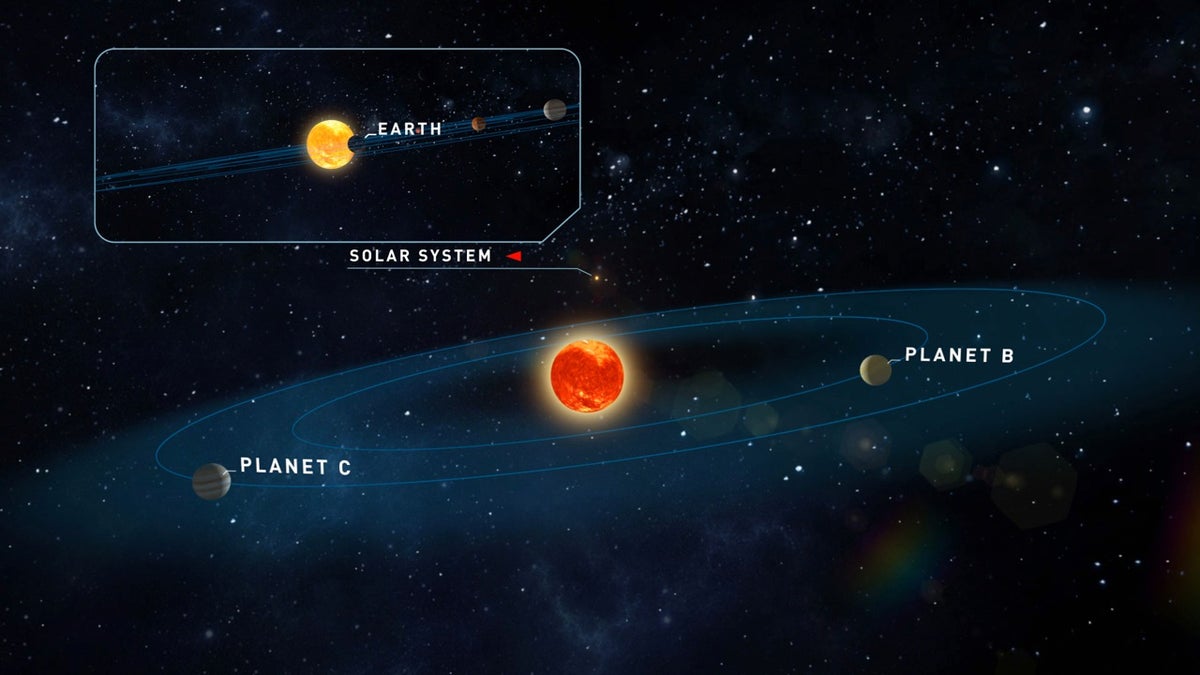Fox News Flash top headlines for June 20
Fox News Flash top headlines for June 20 are here. Check out what's clicking on Foxnews.com
There are even more potentially habitable planets near Earth than we ever imagined. A research team discovered two Earth-like planets in our cosmic backyard, and they're located in the perfect zone for water to form on their presumably rocky surfaces.
The planets orbit a sun known as "Teegarden's star," which is only 12.5 light-years from Earth. (A light-year is the distance that light travels in a year, or roughly 6 trillion miles or 10 trillion kilometers.) The two planets look an awful lot like Earth and our neighboring worlds, the researchers said.

A diagram showing the arrangement of the two newly detected planets orbiting Teegarden's star.
"The two planets resemble the inner planets of our solar system," lead author Mathias Zechmeister, a research scientist at the Institute for Astrophysics at the University of Göttingen in Germany, said in a statement. "They are only slightly heavier than Earth and are located in the so-called habitable zone, where water can be present in liquid form."
Related: Our Interstellar Neighbors: 5 Potentially Earth-Like Planets Nearby
More From Space.com
The results were obtained as part of the CARMENES search for exoplanets; CARMENES stands for "Calar Alto high-Resolution search for M dwarfs with Exoearths with Near-infrared and optical Échelle Spectrographs."
According to that project's observations, the newly found worlds orbit their parent star with periods of roughly five days and 11 days, respectively. That's very quick compared to planets orbiting our own sun (even Mercury takes 88 days for a single circuit), but Teegarden's star is an M dwarf — a type of star that produces less light and energy than our own sun. Any potentially habitable worlds would be found huddled closer to this star than Earth is to the sun, or their water would freeze. Thus, their orbits would be quicker.
More planets could be lurking in Teegarden's star's solar system, the research team added, as many stars have more than a couple of planets orbiting them. The research team tried to find more evidence of planets using the "transit" method, which looks for subtle dips of brightness as a world passes in front of its star.
The scientists didn't detect any transits, but they did point out a coincidence of cosmic geometry: Any potential inhabitants on the newfound planets could use the transit method to see Earth. That's because from the vantage point of Teegarden's star, Earth orbits its sun at just the right angle to transit across the face of our star, allowing any astronomers "out there" to spot us as we pass by.
A paper based on the research was published in the journal Astronomy and Astrophysics.
- Sweet Super-Puffs: These 2 Exoplanets Have the Density of Cotton Candy
- Exoplanet Hunters Have a New Plan to Spot Hidden 'Migrating' Worlds
- The Strangest Alien Planets (Gallery)
Original article on Space.com.

